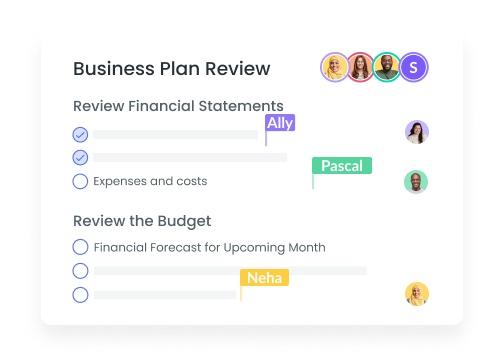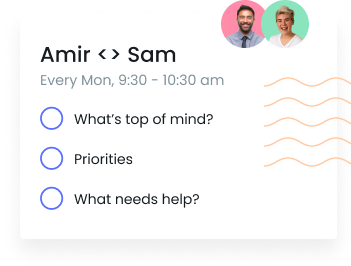Governance Meeting Agenda (Tech)
Use this template to address the unique governance challenges and opportunities wi...
View templateUse this template to address the unique governance challenges and opportunities wi...
View templateEnsure that nothing slips through the cracks during your weekly operations sync! T...
View templateThis retreat agenda will leave your team feeling inspired, connected, and motivate...
View template
Navigate your tactical meetings with precision and confidence! This template is pa...
View templateNavigate through the transition process with ease and ensure everyone is on the sa...
View templateDrive positive change with this Process Improvement Meeting Agenda Template. This ...
View template
Conduct a fair and constructive disciplinary meeting with this template that provi...
View templateBuild strong relationships with your clients with upbeat and informative monthly c...
View templateUse this template to ensure that your team starts off on the right foot and sets t...
View template
Use this template to structure a comprehensive and orderly shareholders’ meeting...
View templateEnsure that progress meetings are focused, engaged and results driven with this te...
View templateKeep your senior management team aligned with this template designed to facilitate...
View template
A business meeting is a gathering of professionals within an organization or between businesses. While the specific topics of these meetings can range from regular team meetings to high-stakes negotiations, oftentimes individuals discuss operations, projects, challenges and accomplishments. Business meetings might occur in person or online, depending on the circumstances and preferences of the attendees.
To conduct a business meeting, start by identifying a clear purpose and set objects for what you want to accomplish. With this in mind, invite the necessary people and create a meeting agenda that includes the topics that you would like to discuss. When it comes time for the meeting, facilitate the conversation by going through the topics on the agenda, and jotting down notes and action items as they come up. End the meeting with actionable next steps and a summary of key decisions to ensure all participants are on the same page.
The primary purpose of a business meeting is to foster communication and collaboration. These meetings serve as a platform for decision-making, problem-solving, strategy development, and alignment on goals/projects. Ideally, these meetings are an opportunity to move work forward.
The steps to prepare for a business meeting may vary depending on whether you are the organizer or a contributor. For organizers, it’s important to clearly define the meeting’s goals and objectives before scheduling the meeting. To prepare for the meeting, organizers should create a focused agenda that outlines topics for discussions. It’s often a good idea to share the agenda and any other resources with the other attendees prior to the start of the meeting. If you are not the meeting organizer, prepare for the meeting by reviewing the agenda and gathering any necessary information or resources. If your team uses a collaborative meeting management platform like Fellow, contributors can also prepare for the meeting by accessing the shared agenda and adding any additional talking points that they would like to discuss.
While topics may vary depending on the type of meeting, a well structured business meeting typically begins with an introduction and/or a review of the meetings objectives. From there, systematically go through the discussion topics on the agenda, allowing time for questions and input from participants. End the meeting with documented action items and next steps.
One way to enhance the effectiveness of a meeting is to limit attendees to only the essential participants. Studies have shown that “every attendee over 7 reduces the likelihood of making a good, quick, executable decision by 10%”. Other ways to increase the effectiveness of these meetings include encouraging participation from all attendees, sticking to the agenda, and ensuring that the meeting ends with assigned action items (complete with due dates).